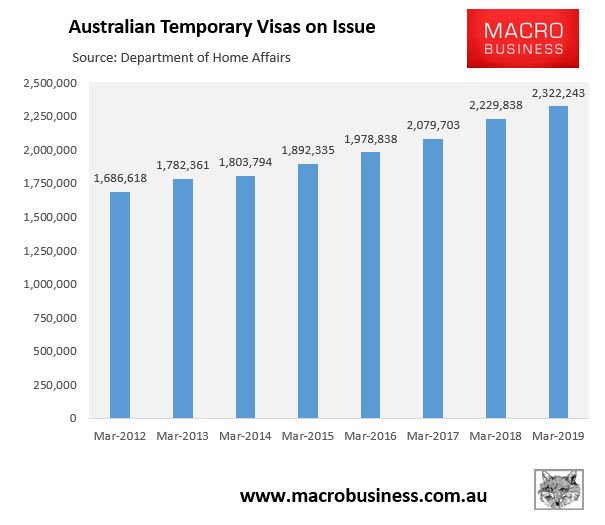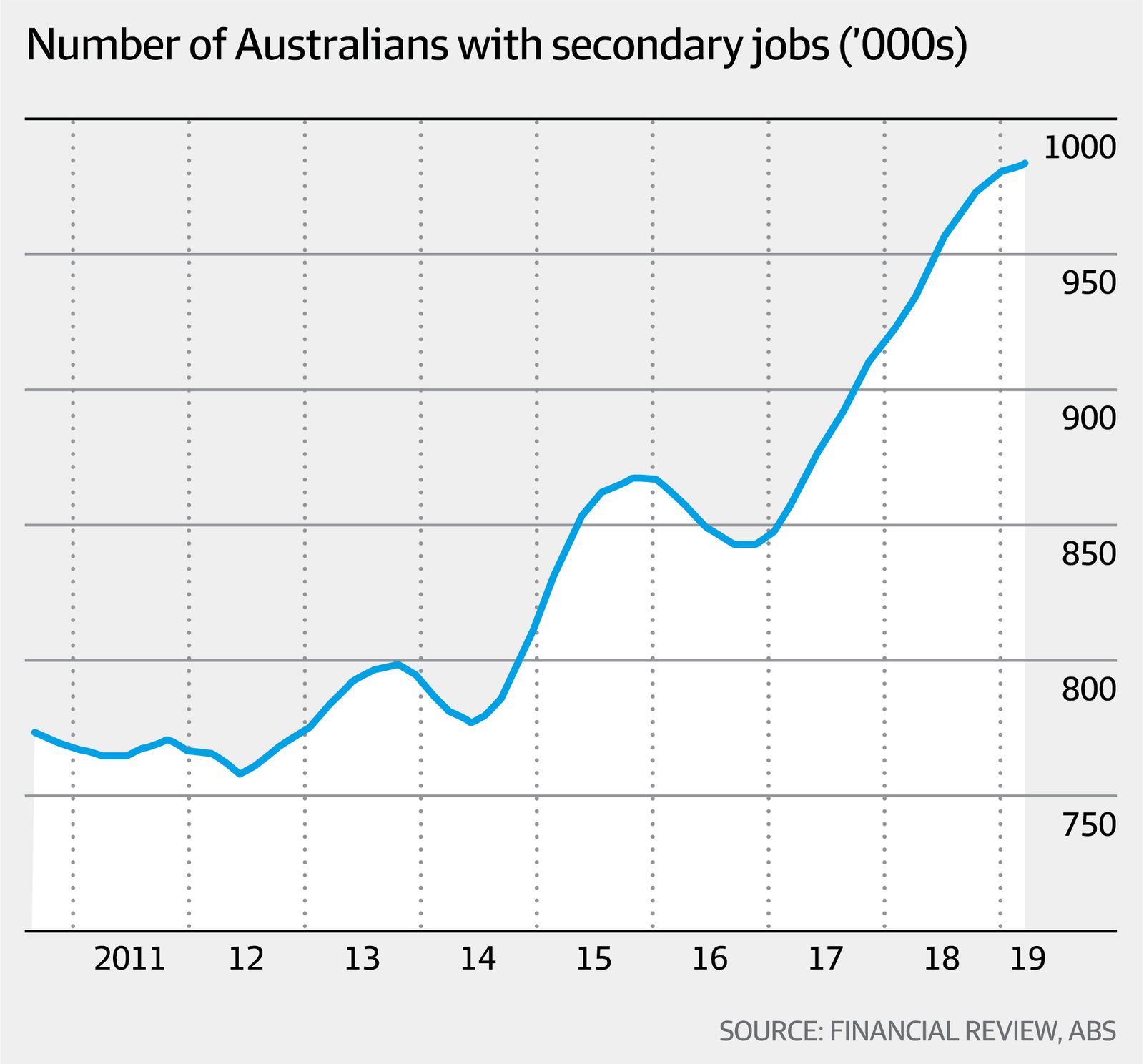Australians have embraced the so-called gig economy with great enthusiasm and an incredible survey commissioned by the Victorian Labor government shows that more than 13 per cent of those surveyed were engaged in it.
More than half those people—- seven per cent— were adding income from their gig tasks to their full-time job. It is this supplemental income that is helping struggling mortgage holders hang on to their houses and manage cost of living pressures…
The survey showed most people were earning $32 an hour and that income is playing a vital role in shielding our community from the worst effects of the credit squeeze…
The below chart from The AFR tells the story, with the number of people holding secondary jobs surging:
The Australian Bureau of Statistics estimates that as at March 2019, around 979,583 people had secondary jobs. This is up from 853,248 in March 2017, 852,311 in March 2015, and 782,756 in March 2013. That’s an increase of 25.1 per cent since 2013, since when the overall population has grown about 8.2 per cent.
Only a fortnight ago, academics warned that Australia’s gig economy is dominated by migrants and is pushing down wages:
Wages and working conditions could take a hit if ‘gig economy’ jobs such as takeaway delivery continue to expand, researchers of a new study have warned.
In 2017 the researchers spoke to 58 Uber Eats and Deliveroo workers in Melbourne and Perth… 47 of the 58 riders interviewed said they were in Australia on student or working visas…
Study co-author Tom Barratt from Perth’s Edith Cowan University said the major issue was workers were engaged as independent contractors and could be paid less than minimum wage without breaking employment laws… “if more and more jobs enter the gigosphere, this can put downward pressure on the wages and conditions of workers in non-gig jobs,” he said…
The Department of Home Affairs’ temporary visa statistics shows that the number of temporary visas on issue as at March 2019 ballooned past 2.3 million, up 92,400 over the year:

And this increase has been driven by international students, whose numbers have surged by 268,000 since 2012:

The boom in international students and the gig economy goes hand in hand, as does systemic exploitation and erosion of Australian wages.


